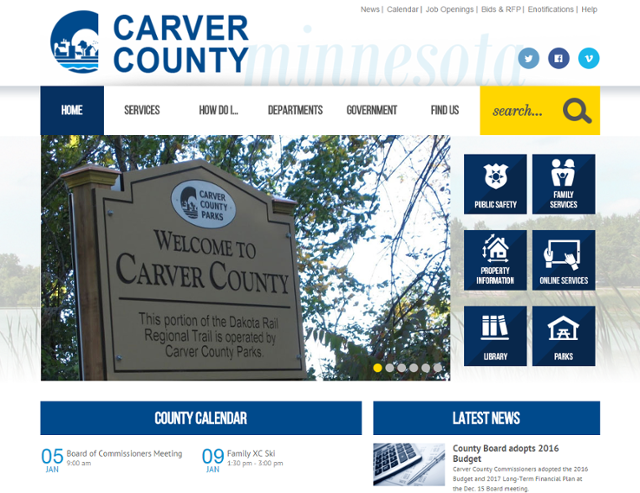What were some of your goals for your 2015 website redesign?
We have four types of clients: residents, visitors, other government agencies and business partners. The site needed to be easy to navigate, functional, compliant, responsive, visually appealing and of course—meet the needs of our users.
What was the biggest change to the site?
Overall the site is less cluttered and has fewer links. The biggest change was the modernizing the navigation—making it more holistic and intuitive for the customer. To that end, if the client can’t find what they need using the nav, we also display the search bar in a very prominent way.
On the content side, we went from 2,500 pages to about 800—which is much more manageable.
How did you project manage your redesigns?
We did a significant amount of homework analyzing the old site before we created the RFP, in particular, we looked at bounce rates, time-on-page and searched terms.
I knew from prior experience that we needed to get input from across the entire organization. The division directors appointed their staff members to the redesign committee.
Pre-redesign we worked closely with Granicus on heat maps and scroll maps. The resulting wireframes were presented to us in-person.
We didn’t use any formal project management process, but we did use somewhat of an iterative model. Preliminary information gathering was done at the department-head level. Additionally, we included our front desk person in the process because of one our goals was to cut down on phone calls. The committee members were responsible for filtering requests from their corresponding departments. During the committee meetings, we used the analytics to keep the conversations on track.
How did you keep the redesign front-of-mind for the organization?
We met with the committee every two weeks to review the current website and brainstorm – which helped keep the project in their minds throughout.
We heard that you launched your site concurrently with other strategic projects?
Yes, we launched two new GIS mapping applications (one which highlights government facility locations and regional parks/trails and the other which offers geolocating and licensing information for licensed daycares throughout the County) concurrent to launching the site.
If a neighboring agency asked you to give them one tip to accomplish a successful web design what would that be?
Give yourself enough time and runway pre-project.
If you are embarking on a redesign and take a look at our eBook, “7 Ways to Prepare for a Website Redesign.”








